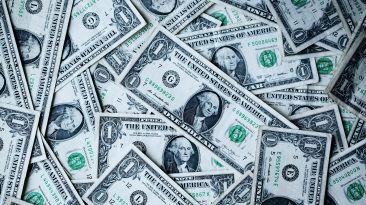Slavery, America’s original sin, was outlawed by President Lincoln on New Year’s Day in 1863. But the repercussions of this brutality and dehumanization linger within the institutions we entrust with our safety today.
Whether you’re discussing segregation through Jim Crow laws, or the redlining that denied services to people based on their ethnicity, it’s true that racist policies meant to hold down an entire group of people were created by America’s forefathers. So what if the United States paid reparations to Black people for slavery?
Who would receive the payments? How much would the reparations cost? And could this help heal America?
Home to the first British colony in America, the coastal port of Jamestown, Virginia became the model for English citizens seeking a new life overseas. And 1619, it was this community was where privateers, paid by the British Government, brought the first twenty Black people to be auctioned and sold.
Decades later, slavery was so ingrained in everyday life that few major businesses didn’t profit from the racist laws and human suffering. So, if the United States were to pay reparations today, how would it improve our society?
So how could America begin to repay a debt rooted in the sale of human beings? Well, first you would have to look at all the economic growth created by the free labor for a new era in agriculture.
Upon their arrival, Black people were made to harvest crops like cotton, tobacco, and sugar. Their free labor was in high demand to jumpstart these new industries. And their enslavement became the biggest source of growth for the American economy.
Under this legal and economic system, almost 12.5 million people were kidnapped from Africa through the Transatlantic slave trade. And 15% of the abductees died on the ships.
From kidnapping to imprisonment, Black people put their bodies on the line for the right to exist.
If they weren’t forced to labor in the fields, they cleaned the houses, cooked the meals, and raised the children of the same people who shackled them. Although the Emancipation Proclamation was enacted in 1863, it wasn’t until two years later, on June 19, 1865, that Black people were set free from human bondage. Now celebrated as Juneteenth, it memorializes the day troops came to Galveston, Texas and informed the enslaved Black population that they were free.
But years after being outlawed, slavery openly continued amongst those who profited from it the most. Author Jason Hicke estimated that in the United States alone, over 222 million hours of forced labor occurred between 1619 and 1865.
That’s over 25,000 years of forced labor. If you were to pay for that labor today, at minimum wage, it would cost $97 trillion. And this doesn’t take into account that a working day wasn’t an eight-hour shift.
So, where would the reparations money come from? Well, the money could come from three main groups. The first being the state and federal government, who supported slavery at the highest levels.
Before Abraham Lincoln, 12 of the U.S. presidents owned Black people. The U.S. Treasury department collected 2% of the value assigned to enslaved people, its chief source of revenue.
And to further strip away their dignity, the Constitution declared that every enslaved Black person only counted as three-fifths of a human. Another source of income? The private businesses that profited from the sale of Black people could also help fund reparations.
And some organizations are already trying to repay this debt. In 2019, Georgetown University announced plans to raise $400,000 a year for reparations. The money will be paid to the descendants of enslaved people whom the university sold.
Of course, this money comes from fundraising, not the university. And some of the same wealthy clientele who will donate to Georgetown may or may not be a family that directly benefited from slavery.
Another source of income could be taxes used to pay off that almost $100 trillion reparations price tag. Lastly, the private businesses who benefitted from slave labor, and still exist today, could pay their share in taxes to help fund reparations. When we think of slavery, we picture a Southern farm collecting profits from all the forced labor.
But up north, on Wall Street, slavery kept the market running. Giant insurance companies offered policies on enslaved people, and securities to help plantation owners expand their farms. Businesses grew fast on the backs of the enslaved and exploited.
Banks even accepted enslaved workers as collateral. Taxing these businesses to repay the money they made from exploiting humans could go a long way toward healing America’s wounds.
But who will be eligible to this payment? The U.S. Census estimates that the African-American population in the United States is almost 42 million people. That’s about 12% of the total U.S. population.
At What If, we calculate that if you gave each descendant and Black U.S. citizen an equal share of the $97 trillion, they would get over $2 million per person. And if that sounds outrageous to you, here’s something to consider.
The proposed defense budget in the U.S. for 2021 is $740 billion. Giving Black citizens $2 million each could offset the historically narrow pathways to success they have faced, and help improve many lives.
Citizens who have legally identified themselves as African American in the past would be eligible for these life-changing funds. Black Americans living below the poverty line would increase their standard of living. And while you may think that slavery is far in the past, the effects of creating second class citizens have not disappeared.
The Civil Rights Act, prohibiting all forms of racial discrimination, wasn’t signed into law until 1964. And leading up to that time, Jim Crow laws, created in the late 1800s, were meant to demean and control the behavior of Black People. Black people weren’t allowed to eat with whites or even shake their hands. The reparations money could change struggling families’ lives. Black people could also afford to move into areas that they might have considered to be off-limits.
Many housing districts were restricted by color and class because of sanctioned government policies. The Federal Housing Administration even refused to insure mortgages in and near African-American neighborhoods. This policy was known as redlining, and it helped create the resource deserts that exist currently in low-income areas.
The redistricting guidelines limited Black people’s access to fresh food and health services, and led to an overabundance of law enforcement. But if people choose to stay in disadvantaged neighborhoods, there could be an economic boom.
Private reinvestments in Black communities could decrease crime in low-income areas for people of all colors. NYU researchers found a 6% decrease in violent crimes within cities that started community outreach programs. The reparations money would also help to fix the embarrassing wealth gap in the United States.
According to the Federal Reserve’s Survey of Consumer Finances, the median wealth of Black households is $16,000. Compare that to white households’ median wealth, valued at $163,000. That’s a 90% difference.
Even with time, that’s a difference too hard to overcome. But one thing is clear. Bridging the economic divide wouldn’t overcome the racist attitudes developed over generations.
And paying reparations wouldn’t be accepted by fringe groups who already hold racist beliefs. Paying back this long overdue debt could create a lot of jealousy and resentment.
But there’s no doubt that if the United States found the funds to pay off reparations, the effects would be immediate. If the U.S. were to give back what it owes, in terms of paying people for the work they have done, there could be a cultural renaissance, growth in communities once held down by race and class restrictions.
But to create this healing social change, some members of American society would need to advance in terms of thought and insight years beyond what they may be capable of now.
Sources
- “When will Britain face up to its crimes against humanity?”. Kris, Manjapra. 2018. The Guardian.
- “People Are Again Talking About Slavery Reparations. But It’s A Complex And Thorny Issue”. Breeanna Hare and Doug Criss, CNN. 2021. CNN.
- “Should America Pay Slavery Reparations?”. Shomari, Wills. 2021. Investopedia.
- “A Brief History Of Slavery That You Didn’t Learn In School”. Elliott, Mary, and Jazmine Hughes. 2019. nytimes.com.
- “The case for British slavery reparations can no longer be brushed aside”. Afua. Hirsch. 2020. The Guardian.
- ” DUE PROCESS OF LAW “. 2021. LII / Legal Information Institute.
- “What Happens When States Defy Federal Laws”. 2021. npr.org.
- “What Is Juneteenth?”. 2021. HISTORY.



























